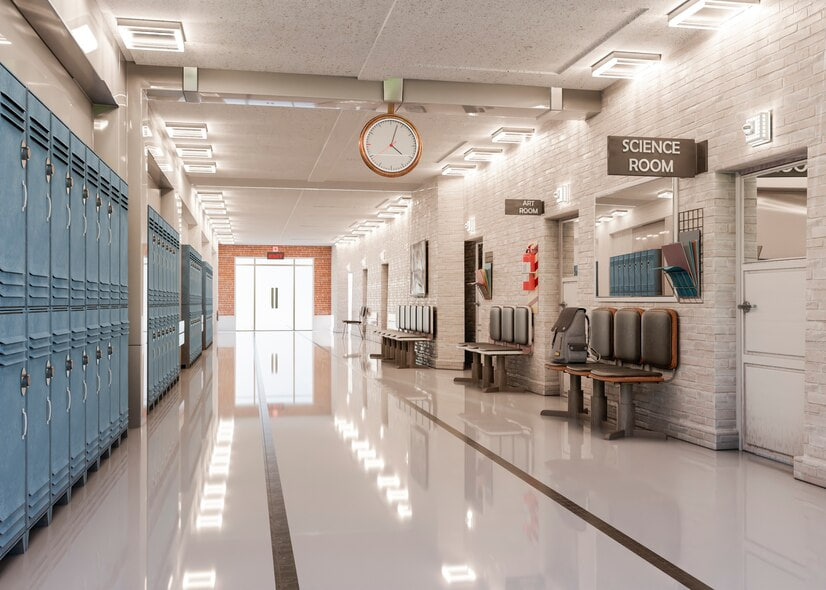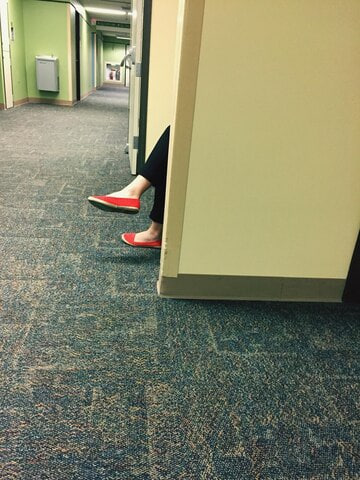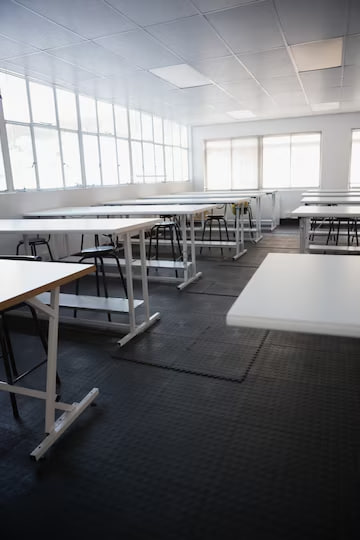Rubber Flooring for Schools and Classrooms
22 May, 2024
Safety is the most important thing to consider when selecting flooring for schools. The surface should be slip-resistant and shock-absorbing, free from harmful chemicals, and easy to clean.
The good news is that there exists a single solution that fully meets these requirements — rubber flooring. If you want to learn more about slip-resistant rubber flooring for schools, stay on this page. This article explores the benefits of rubber flooring, and even more.

Advantages of Rubber Flooring for Schools
Can I use rubber flooring in schools? School administrators and facility managers often ask us this question. The answer is yes. What is more, by choosing rubber flooring for school facilities, you get a durable and resistant flooring solution, which is easy to maintain and safe for people’s health.
Here are the key advantages of rubber flooring for schools.
Safety Features
Rubber flooring is a perfect choice for education facilities because it’s safer than most popular options. Rubber provides good shock absorption, reducing the risk of injuries during play or sports activities. In addition, rubber flooring is slip-resistant, minimizing the likelihood of related accidents.
Rubber flooring doesn’t require coating. This means the absence of toxic fumes emitted by coating products and better quality air.
Comfort and Acoustic Benefits
Rubber flooring offers a comfortable surface with a natural cushioning effect, making it beneficial for teachers and students who spend long hours on their feet.
Moreover, rubber boasts remarkable sound-absorbing properties, which perfectly addresses the need to reduce noise levels in schools. Rubber floors help create a quieter and, therefore, more focused learning environment.
Durability and Longevity
Rubber flooring is highly durable, which is essential for busy areas like schools. Rubber floors can handle heavy foot traffic and impacts. This makes them suitable for hallways, reception areas, and gymnasiums. Furthermore, rubber demonstrates outstanding resistance to wear and tear. This ensures a longer lifespan and minimizes the need for frequent replacements or repairs, saving you cost in the long run.
Versatile Applications of Rubber Flooring in Educational Spaces
Rubber flooring is a practical choice for various educational spaces, including:

Cafeterias
School cafeterias are high-traffic areas. Plus, these facilities are prone to spills and messes. Slip-resistant rubber flooring significantly reduces the risk of accidents caused by spills. In addition, rubber floors usually require little maintenance. This makes them an excellent choice for such spaces.
Not to mention, rubber flooring is strong enough to withstand daily shuffling of furniture without showing signs of wear and tear. Finally, rubber flooring products come in various colors and designs, which allows schools to create vibrant dining spaces.

Swimming Pools
Rubber is the perfect pool deck surfacing for schools due to its remarkable slip resistance. It enhances safety, reducing the risk of slips and falls. In addition, the material’s durability helps rubber flooring withstand water and chlorine, ensuring a long-lasting solution.
Hallways and Corridors
Rubber flooring is an excellent solution for classrooms. It helps reduce noise and feels soft underfoot. Rubber flooring is comfortable for students and teachers to stand or walk on. At the same time, its ability to absorb sound helps create a quieter indoor environment.
Classrooms
Rubber flooring is durable and resistant to high foot traffic. This makes it well-suited for school hallways. It effectively withstands the daily hustle and bustle of children moving between classes, lockers, and other facilities. Furthermore, its noise-reduction properties contribute to a quieter learning environment.
Gymnasium
In gymnasiums, the shock absorption capabilities of rubber flooring are extremely relevant. Firstly, rubber minimizes the risk of injuries from falls. Secondly, the durability of rubber flooring makes it particularly suitable for gymnasiums. It can withstand the impact associated with sports activities and equipment.
Playground
Rubber playground surfacing is the best choice for safe play. Its shock absorption properties minimize the impact of falls, which diminishes the risk of injuries. Rubber flooring is also resilient to various weather conditions. This ensures the playground remains accessible and safe throughout the year.
Maintenance Tips
School managers should ensure that maintenance staff take proper care of rubber floors. Besides the everyday cleaning recommendations of the Centers for Disease Control and Prevention, there are some essential things you can do to prolong the lifespan of rubber flooring. Let’s take a look at them:
- Remove spills immediately to prevent stains.
- Don’t use abrasive brushes that may scratch the surface of the rubber flooring.
- Before using any cleaning agents, do a resistance test on a small, unnoticeable area.
- Use furniture pads or protective caps on the chair and table legs to minimize scratching or denting.
- Conduct periodic deep cleaning using a mild floor cleaner.
- Discourage using high-heeled shoes on the rubber flooring. This will prevent punctures or damage.
- Periodically inspect the rubber flooring for any signs of wear, damage, or loose seams. It’s crucial to address issues promptly to prevent further damage.
- Maintain proper indoor humidity levels to prevent mold or mildew growth.
Summing Up
Versatile applications of rubber flooring in educational spaces make it the go-to choice for schools that prioritize safety, comfort, and durability.
The team at SafeStep offers a wide range of high-quality rubber flooring options, including durable and low-maintenance rubber flooring for schools. If you’re looking to install rubber flooring in an education facility in your school district, contact us. We can provide specific solutions for gymnasiums, playgrounds, pools, running tracks, etc., to ensure safety and comfort for students and staff.
